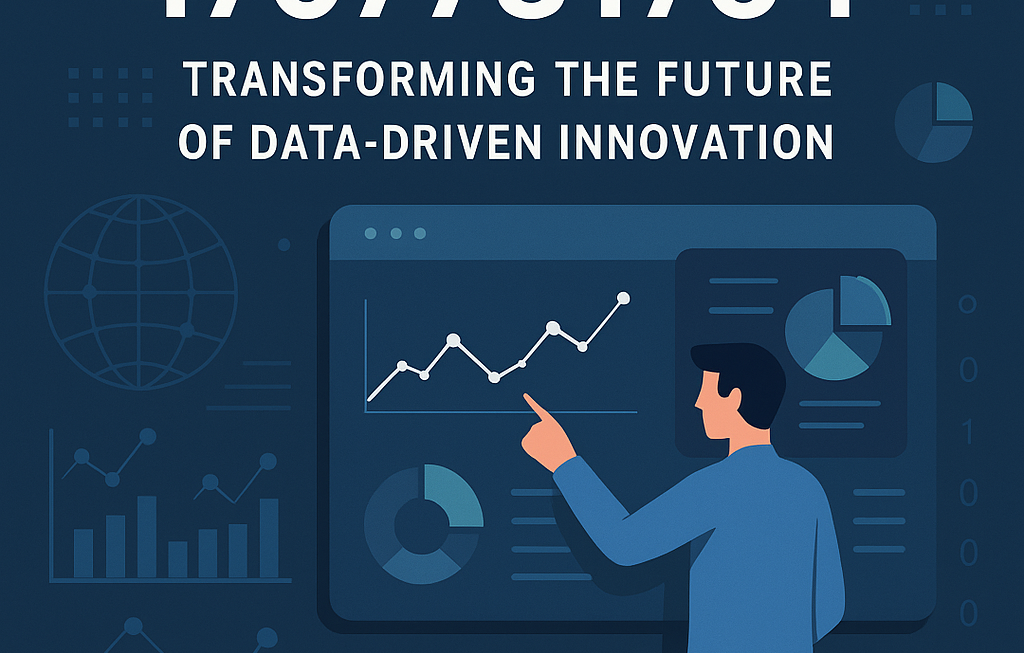Our hyper-competitive and data-rich landscape requires organizations to constantly strive to leverage their data assets for strategic advantage. Merely collecting data isn’t enough; the true power lies in how effectively that data is managed, analyzed, and used to drive insights and innovation. This pursuit has given rise to the concept of data maturity, and with the advent of artificial intelligence, a new, more dynamic framework is emerging: AI-Powered Data Maturity Models.
These models are not just buzzwords; they represent a critical roadmap for businesses looking to elevate their data capabilities, move beyond basic reporting, and truly embed data-driven intelligence into every facet of their operations.
What Are AI-Powered Data Maturity Models?
At its core, a data maturity model is a framework used to assess an organization’s capabilities in managing and utilizing its data. It typically outlines various stages, from nascent (basic data collection) to advanced (data-driven innovation), allowing businesses to understand where they stand and what steps they need to take to improve.
AI-Powered Data Maturity Models take this concept a significant leap further. They integrate the principles and capabilities of Artificial Intelligence and Machine Learning (ML) directly into the assessment and progression framework. This means they not only evaluate an organization’s existing data infrastructure, governance, and analytical prowess, but also its ability to:
- Implement AI/ML solutions: Assess the adoption and effective deployment of AI technologies for data processing, analysis, and decision-making.
- Generate predictive and prescriptive insights: Move beyond descriptive analytics to anticipate future trends and recommend actions.
- Automate data processes: Evaluate the use of AI for tasks like data cleaning, integration, quality checks, and even feature engineering.
- Foster an AI-driven culture: Gauge how well the organization’s people, processes, and technology are aligned to support advanced data initiatives powered by AI.
These models provide a more nuanced and forward-looking perspective on data maturity, recognizing that true data leadership in the modern era is inseparable from AI capabilities.
Why Are They Different from Traditional Data Maturity Models?
Traditional data maturity models, while foundational, often focus heavily on aspects like data storage, data quality, basic reporting, business intelligence (BI), and perhaps some statistical analysis. They help organizations understand how well they’re managing their data assets and producing reports.
AI-Powered Data Maturity Models differ in several crucial ways:
- Focus on AI/ML Integration: The most obvious difference is the explicit inclusion of AI and ML as central tenets. Traditional models might mention “advanced analytics,” but AI-powered models delve into the specifics of AI model deployment, MLOps, explainable AI (XAI), and the ethical considerations of AI.
- Shift from Descriptive to Predictive/Prescriptive: Traditional models often culminate in strong descriptive and diagnostic analytics (“What happened?” and “Why did it happen?”). AI-powered models emphasize moving towards predictive (“What will happen?”) and prescriptive analytics (“What should we do?”), which are heavily reliant on ML algorithms.

- Emphasis on Automation and Optimization: AI-driven models assess the extent to which AI is used not just for insights, but for automating data pipelines, optimizing business processes, and even autonomously making operational decisions.
- Cultural and Organizational Readiness for AI: These models often evaluate an organization’s cultural readiness for AI adoption, including skills gaps, ethical guidelines for AI use, change management for AI-driven processes, and the presence of dedicated AI/ML teams.
- Dynamic and Iterative: Given the rapid pace of AI innovation, AI-powered models tend to be more dynamic, encouraging continuous improvement and adaptation to new AI technologies and methodologies.
What Are the Different Stages and What Do They Entail?
While specific nomenclature may vary between different frameworks, AI-Powered Data Maturity Models generally follow a progression through distinct stages. Let’s outline a common five-stage structure:
Stage 1: Foundational (or Novice)
- Data Characteristics: Data is often siloed, inconsistent, and primarily collected for operational purposes. There’s limited data integration or standardization.
- Analytics Capabilities: Basic descriptive reporting is common, often manual or semi-automated. Excel spreadsheets are heavily used.
- AI/ML Integration: Virtually non-existent. There’s little to no awareness of AI’s potential or concrete plans for its adoption.
- Organizational Culture: Data is seen as an IT function, not a strategic asset. Resistance to change is high.
- Goal: Establish basic data governance, centralize critical data, and improve data quality.
Stage 2: Exploratory (or Defined)
- Data Characteristics: Some data integration begins, with efforts to standardize data definitions. Data quality initiatives are in place.
- Analytics Capabilities: Standardized dashboards and business intelligence (BI) tools are used for diagnostic analysis (“Why did this happen?”). Some ad-hoc statistical analysis may occur.
- AI/ML Integration: The organization is exploring proof-of-concept AI/ML projects, perhaps leveraging open-source tools or engaging external consultants. There’s growing awareness of AI’s potential.
- Organizational Culture: Data stewards are appointed. Management recognizes data’s value but struggles with consistent execution.
- Goal: Develop a clearer data strategy, invest in data infrastructure, and identify specific use cases for initial AI pilots.
Stage 3: Managed (or Quantified)
- Data Characteristics: Robust data governance frameworks are in place. Data lakes or warehouses are established, with clear data pipelines and quality controls.
- Analytics Capabilities: Advanced BI tools provide comprehensive descriptive and diagnostic insights across departments. Basic predictive models (e.g., simple regression) might be used.
- AI/ML Integration: Dedicated data science teams are formed. Several AI/ML models are in production for specific business problems (e.g., customer segmentation, simple forecasting). MLOps practices are starting to be considered.
- Organizational Culture: Data-driven decision-making is encouraged. Training programs for data literacy and AI awareness are common.
- Goal: Scale successful AI/ML initiatives, mature MLOps practices, and foster broader adoption of advanced analytics.
Stage 4: Strategic (or Optimized)
- Data Characteristics: Data architecture is integrated, scalable, and designed for AI workloads. Real-time data processing capabilities are mature.
- Analytics Capabilities: Advanced predictive and prescriptive analytics are embedded into core business processes. The organization can anticipate market shifts and recommend optimal actions.
- AI/ML Integration: AI is deeply integrated across multiple functions, driving significant business value. Sophisticated ML models (deep learning, NLP) are deployed at scale. There’s a focus on ethical AI and model explainability.
- Organizational Culture: Data and AI are central to strategic planning. Continuous learning and experimentation with new AI technologies are part of the organizational DNA. Cross-functional collaboration is strong.
- Goal: Innovate with AI, explore new business models driven by data, and maintain a competitive edge through continuous optimization.
Stage 5: Generative (or Adaptive)
- Data Characteristics: Data infrastructure is highly adaptive, supporting multi-cloud or hybrid environments. Data assets are actively monetized and used to generate new revenue streams.
- Analytics Capabilities: Autonomous decision-making powered by AI is a reality in many areas. The organization leverages advanced analytics for continuous self-optimization and competitive differentiation.
- AI/ML Integration: AI is not just a tool but a core competency that enables the organization to adapt rapidly to market changes, create entirely new products/services, and achieve transformative outcomes. Focus on AGI, synthetic data, and cutting-edge AI research.
- Organizational Culture: The organization is a recognized leader in AI innovation. AI ethics and responsible AI practices are ingrained at every level.
- Goal: Redefine industry standards through AI-driven innovation and maintain a leading position in the AI economy.

Why Are These Models Becoming More Popular?
The increasing popularity of AI-Powered Data Maturity Models is driven by several compelling factors:
- The AI Imperative: Organizations recognize that AI is no longer optional but a strategic imperative for survival and growth. These models provide a clear pathway to integrating AI effectively.
- Competitive Advantage: Companies that effectively leverage AI for data insights gain a significant competitive edge in terms of efficiency, customer experience, innovation, and market responsiveness.
- Complex Data Landscape: The sheer volume, velocity, and variety of data today necessitate advanced tools. AI/ML can automate data processing, uncover hidden patterns, and make sense of this complexity far beyond human capabilities.
- Demand for Actionable Insights: Businesses are moving beyond simply knowing “what happened” to wanting to know “what will happen” and “what should we do about it.” AI-powered analytics deliver these predictive and prescriptive insights.
- Risk Mitigation and Compliance: AI can enhance data governance, quality, and security. Moreover, these models help organizations address the ethical and regulatory considerations that come with deploying AI.
- Structured Growth Path: Many organizations feel overwhelmed by the prospect of adopting AI. These maturity models offer a structured, stage-by-stage approach, making the journey manageable and measurable.
AI Powered Productivity
AI-Powered Data Maturity Models are essential frameworks for any organization aspiring to be truly data-driven in the age of artificial intelligence. They offer a comprehensive lens through which to assess current capabilities, identify gaps, and chart a strategic course toward becoming an AI-first enterprise.
By understanding and embracing these models, businesses can unlock the full potential of their data, drive innovation, optimize operations, and secure a resilient future in an increasingly intelligent world. The journey to data and AI maturity is continuous, but with a clear roadmap, the destination of transformative business value is well within reach.



